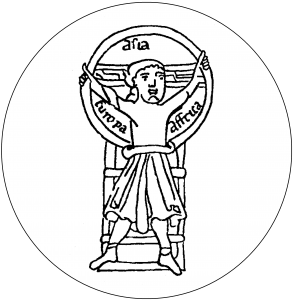Clark Symposium: Science, Ethics, and the Transformations of Art in the Thirteenth and Fourteenth Centuries
Clark Symposium: Science, Ethics, and the Transformations of Art in the Thirteenth and Fourteenth Centuries
Saturday, Sep 28, 2013, starting at 9:00 am; The Sterling and Francine Clark Art Institute, Williamstown, MA
Description: This symposium-convened by Herbert L. Kessler, Johns Hopkins University, and Richard Newhauser, Arizona State University, Tempe-will examine developments in later-medieval art as part of the same continuum of transformations that were taking place in natural philosophy and moral theology.
Much has been written recently regarding the development of perspective in artistic practice. The familiar historical narrative describes a radical transformation occasioned by the reception of ancient Greek optics in the West transmitted through Arabic translations in the twelfth and thirteenth centuries. But the story is more complicated. As we now understand it, Greek optical science was known during the earlier Middle Ages, and painters and sculptors experimented with perspectival effects as early as the twelfth
century. In addition, Christian theories of vision since Augustine had included writings on the metaphoric association of light with God and directionality of vision correlating to morality. These ideas conditioned the ways in which Arabic science was received during the thirteenth century and eventually deployed by artists.
These interests also were played out with particular inventiveness in a major text that is still relatively unknown to most medievalists: Peter of Limoges‘ Moral Treatise on the Eye. This compilation had an important influence on the development of perspective and the
moralization of optics. It made the scientific discourse of Alhacen, Bacon, and others fit for use in the pulpit. As significantly, it glossed the physiology of the eye and the theories of perception in terms of Christian ethics and moralization, thereby making esoteric learning accessible to the public (including artists) through preaching. In addition to situating this recontextualization of vision during the period, the symposium seeks to draw attention to Peter’s treatise.
Participants include: Donal Cooper, University of Warwick; Dallas Denery, Bowdoin College; Samuel Edgerton, Williams College; Jeffrey Hamburger, Harvard University; Herbert L. Kessler, Johns Hopkins University; Aden Kumler, University of Chicago; Christopher Lakey, Johns Hopkins University; Carolyn Muessig, University of Bristol;
Richard Newhauser, Arizona State University, Tempe; Larry Scanlon, Rutgers University; A. Mark Smith, University of Missouri-Columbia.

